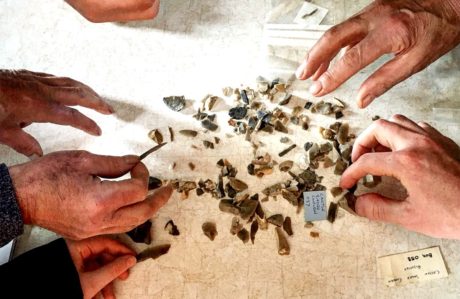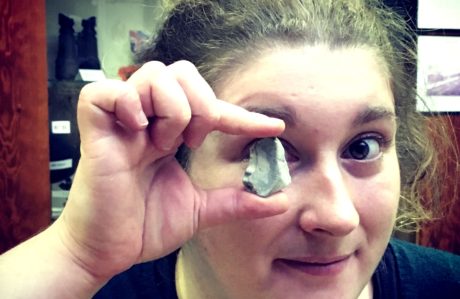
You’ve found a piece of flint, and even managed to establish that it was human-made based on the four tell-tale signs all archaeologists rely on. But how can you tell what period the piece was from, and specifically whether it’s Mesolithic?
We took our Venturers to Littleborough’s History Centre for a chance to handle Mesolithic flint tools and learn how to tell them apart from stone tools from other periods. Here’s how you can learn to tell the difference too!
1. Size matters – Mesolithic flints are often TINY
Mesolithic flints are known for being Microliths, that is, extremely small pieces of worked flint. Although people in the early Mesolithic had slightly larger pieces, the real telltale sign of these Middle Stone Age flints is that quite simply, they’re tiny. The largest of them may be as long as an adult thumb, and these will most likely be those earlier large pieces, but from the mid-late Mesolithic, flints become extra fine and extra small: the size of a thumb nail, down to a little finger nail.
2. So does shape – Mesolithic flints are usually razor sharp
Long and thin is another telltale sign of a Mesolithic flint. Instead of being bulky, round, or just general lumpy as some earlier and later flints are (as in the case of Neolithic scrapers), Mesolithic flints are slight tools that look delicate, though their purpose was less than ornamental.
3. And function – Mesolithic flints are lightweight, precision-made hunting tools
A Mesolithic flint will almost invariably be a tool used for hunting, so think blade, barb and arrow tip. The Mesolithic period saw some major changes with regard to climate, and our hunter-gatherer ancestors needed to be quick and nimble to constantly migrate to hunt down their game (such as red deer, aurochs and elk).
They couldn’t be weighed down by larger pieces of flint, and so the entire flint technology turned miniature with the purpose of firing deadly shots at their prey. Tiny barbs, no larger than a small fingernail would have been inserted into wooden shafts using tree resin: small, sharp cutting machines! Any evidence of the tool being used for more domestic or agrarian purposes indicates that bit of flint is more than likely a Neolithic find, rather than a Mesolithic one.

